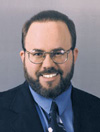U.S. Mint Uncirculated Sets: An Overview
Posted on 11/1/2003
 |
Though I started collecting coins from circulation in the mid-1960s, I didn't really discover the greater world of numismatics until a few years later. As the only active coin collector in the family (my older brother, like most kids, had quickly moved on to other interests), my emerging awareness of the overall hobby community came slowly. It wasn't until 1971, when my mother brought home a brochure from our bank offering collector editions of the new Eisenhower dollar for sale, that I was enrolled on the U.S. Mint's mailing list.
I soon discovered that the Mint offered complete, packaged sets of the current year's coinage, and I ordered my first "Uncirculated" set that year (while the Mint still uses this terminology in its literature and packaging, collectors typically call these annual offerings "mint sets"). After several years out of the spotlight, mint sets have once again become a popular item with the introduction of statehood quarters in 1999. The history of these sets is in some respects more interesting than the coins they contain, so for this month and the next I'll take a look at this long-running series.
Before 1947 there was no systematic method for obtaining uncirculated coins from the federal government. Collectors typically made a friend at their local bank, and this offered the prospect of obtaining fresh rolls of new coins as they came in from the sub-treasuries (after 1914 these were superseded by the federal reserve banks). Collectors could also visit or write to the various mints to obtain current coins at their face value plus the cost of postage (if the coins were to be shipped). There was no central facility for distributing collector coins, and hobbyists of the 19th and early 20th centuries had to contact each mint individually. No limit was imposed on the number of coins ordered, but good judgment usually prevailed, and collectors rarely ordered more than five pieces of any one denomination. So long as the number of requests remained few, this system worked right through the 1920s.
The low mintage coins of the early 1930s, however, changed the dynamics of the coin hobby forever, at least for collectors of United States coins. The slow economic activity of that period both reduced the number of coins struck and greatly slowed their distribution. The 1931-S cents and nickels, for example, were not released in quantity until 1935. The cents dated 1932-33 were likewise very difficult to obtain at the time of minting, and this only increased the number of requests being made to each mint for collector pieces. To deal with this growing demand from collectors, the Treasury Department issued a circular in 1932 that listed both current and older coins (some as far back as 1921) still available in uncirculated condition at face value plus postage. These were to be ordered directly from the Treasury, but, if the current coins of more than one mint were desired, additional postage would have to be included to cover the cost of shipping them directly from the other facilities.
Obviously, this open-ended directive left many collectors puzzled as to exactly how much money to send. Considerable time and correspondence must have been wasted in dealing with those who either overpaid or underpaid. Nevertheless, this system remained in effect for the next 15 years, with the Treasury's list of available coins being updated every couple of years or so.
The hobby of coin collecting exploded during World War II, a period when Americans were working overtime and making a lot of money that they had few ways to spend. Consumer goods were either rationed or had been discontinued altogether, leading to a boom in the entertainment and hobby industries. This heightened activity lasted through the first two or three years of peacetime, and it was not unusual for coin clubs to have more than a hundred persons at each month's meeting! The collecting of current and recent coins was in full swing, and this overwhelmed the Treasury's ability to meet collector requests through its existing system. Clearly something had to change, and the Mint's solution to this problem will be the focus of next month's column.
David W. Lange's column USA Coin Album appears monthly in Numismatist, the official publication of the American Numismatic Association.
Stay Informed
Want news like this delivered to your inbox once a month? Subscribe to the free NGC eNewsletter today!
